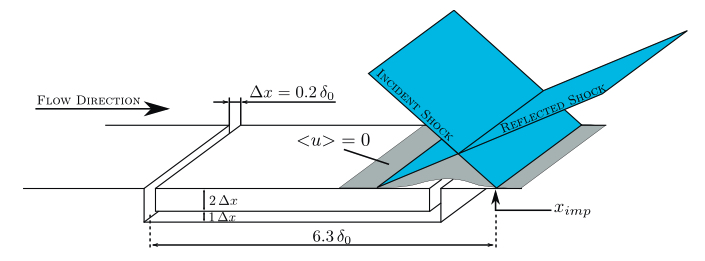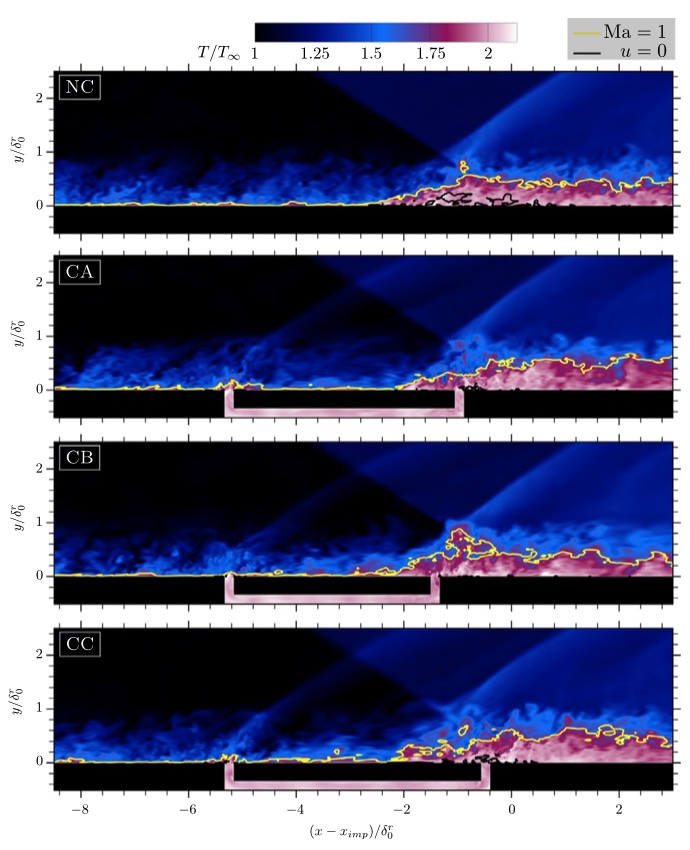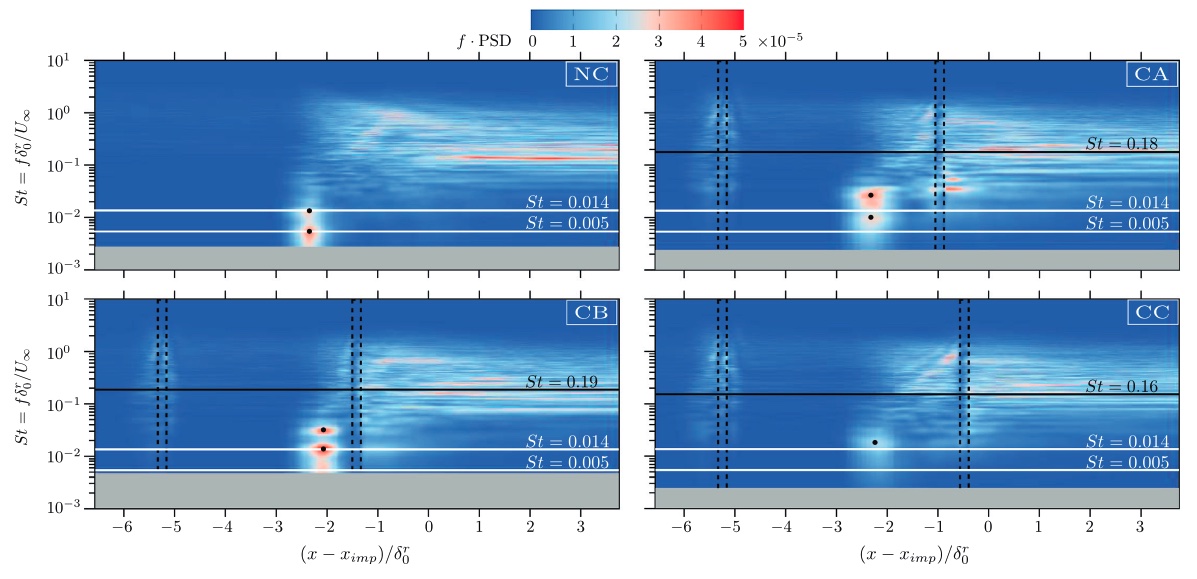V. Pasquariello, M. Grilli, S. Hickel, N.A. Adams (2014)
International Journal of Heat and Fluid Flow 49: 116-127. doi: 10.1016/j.ijheatfluidflow.2014.04.005
We investigate a passive flow-control technique for the interaction of an oblique shock generated by an 8.8° wedge with a turbulent boundary-layer at a free-stream Mach number of Ma∞ = 2.3 and a Reynolds number based on the incoming boundary-layer thickness of Reδ = 60 500 by means of large-eddy simulation (LES).
The compressible Navier–Stokes equations in conservative form are solved using the adaptive local deconvolution method (ALDM) for physically consistent subgrid scale modeling. Emphasis is placed on the correct description of turbulent inflow boundary conditions, which do not artificially force low-frequency periodic motion of the reflected shock. The control configuration combines suction inside the separation zone and blowing upstream of the interaction region by a pressure feedback through a duct embedded in the wall. We vary the suction location within the recirculation zone while the injection position is kept constant. Suction reduces the size of the separation zone with strongest effect when applied in the rear part of the separation bubble. The analysis of wall-pressure spectra reveals that all control configurations shift the high-energy low-frequency range to higher frequencies, while the energy level is significantly reduced only if suction acts in the rear part of the separated zone. In that case also turbulence production within the interaction region is significantly reduced as a consequence of mitigated reflected shock dynamics and near-wall flow acceleration.



